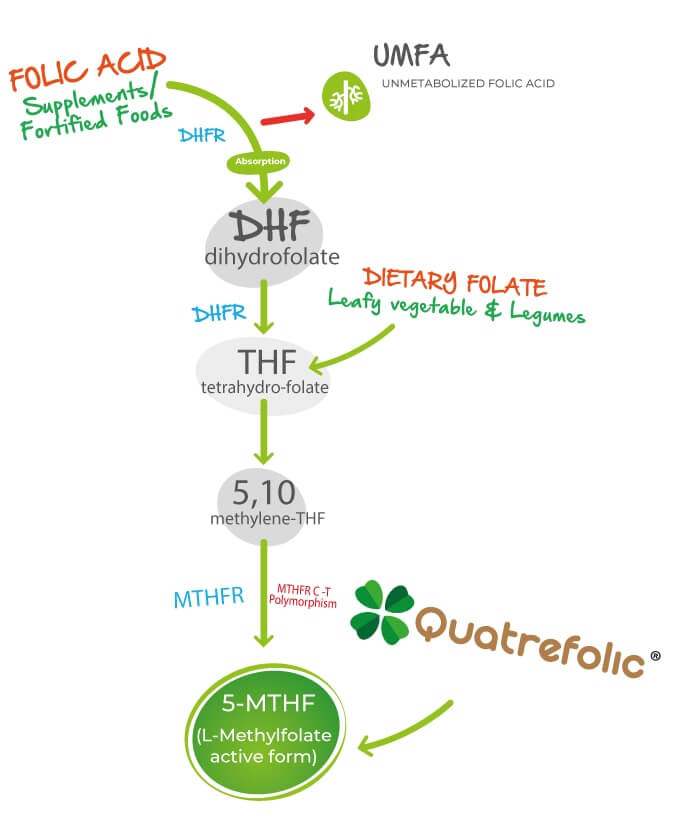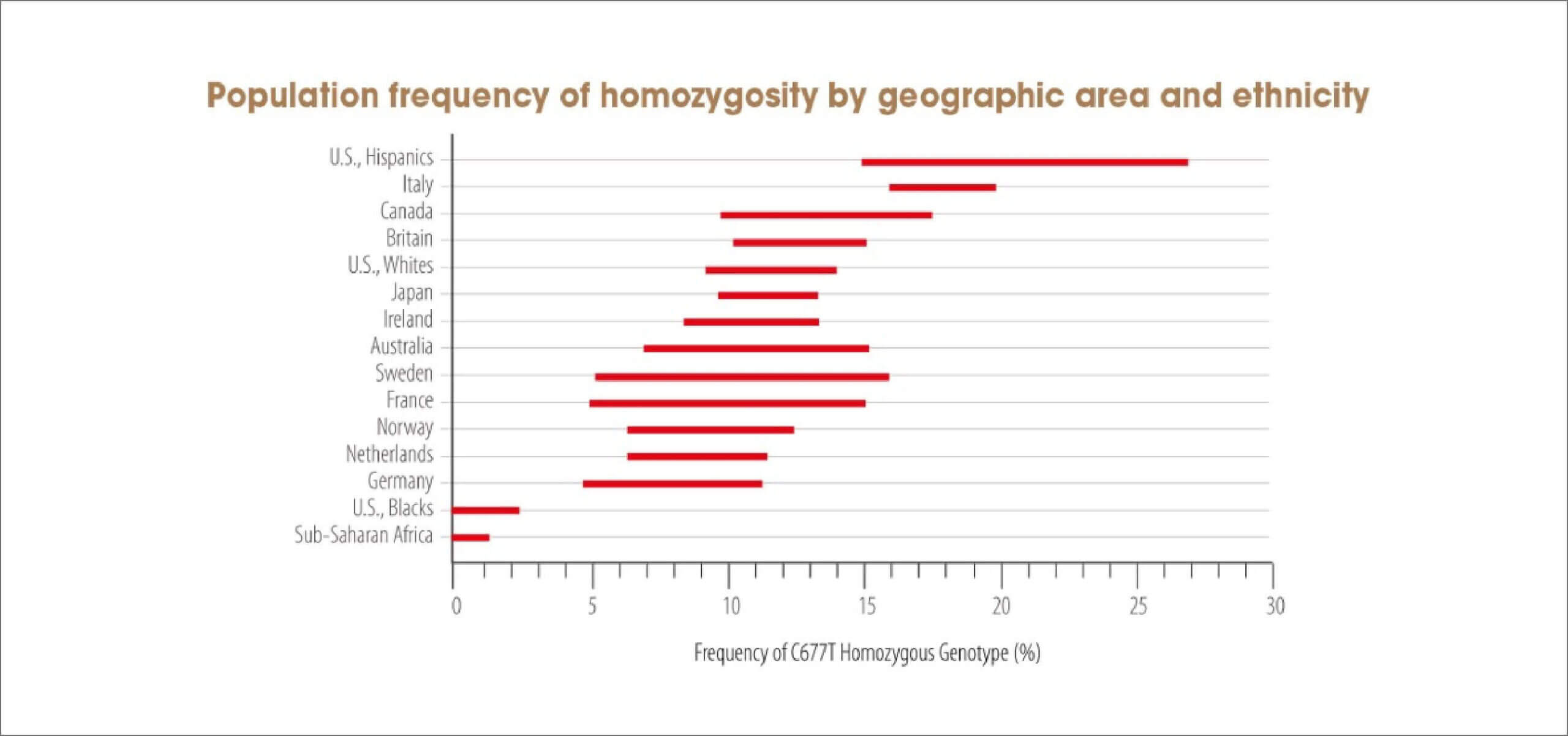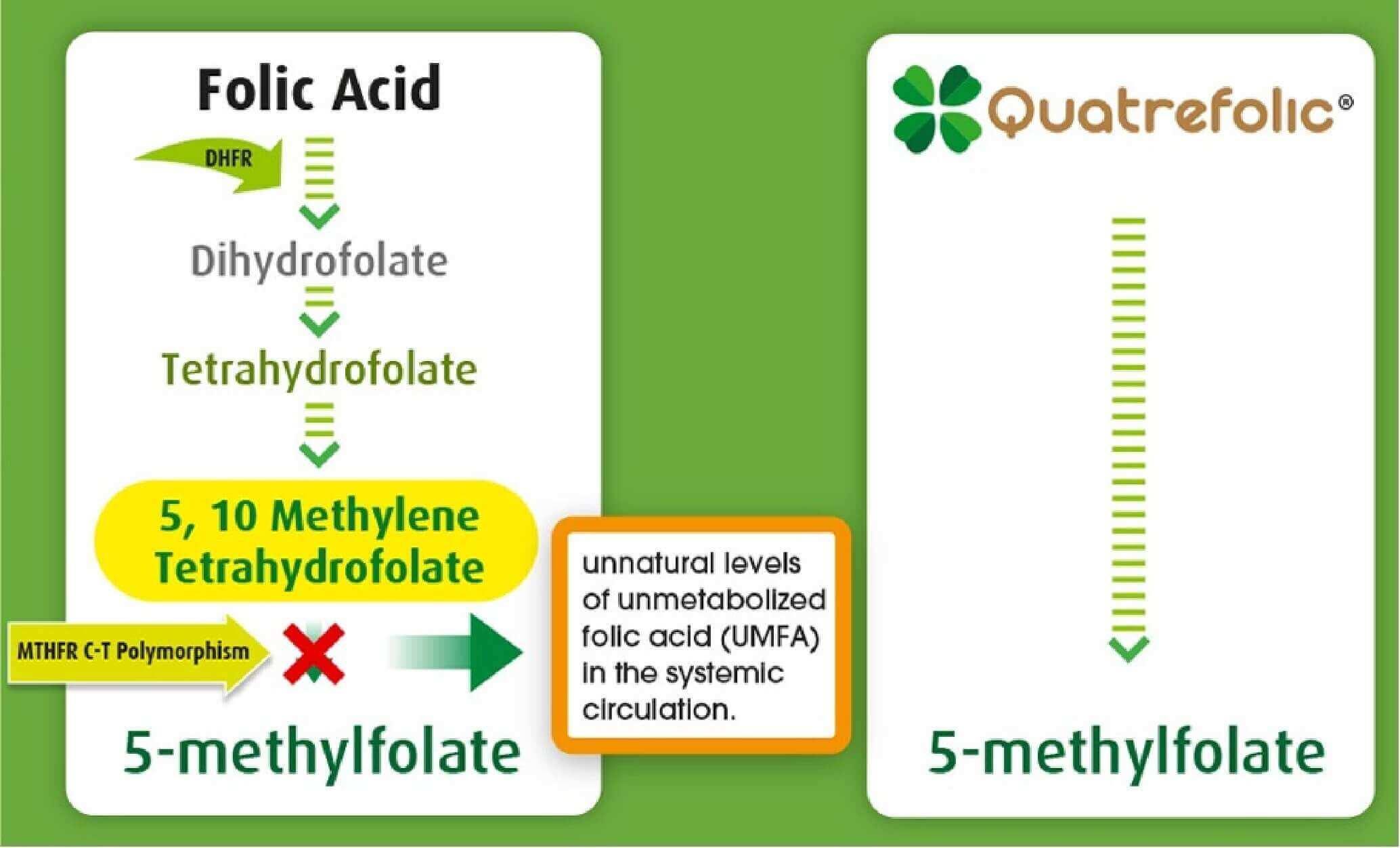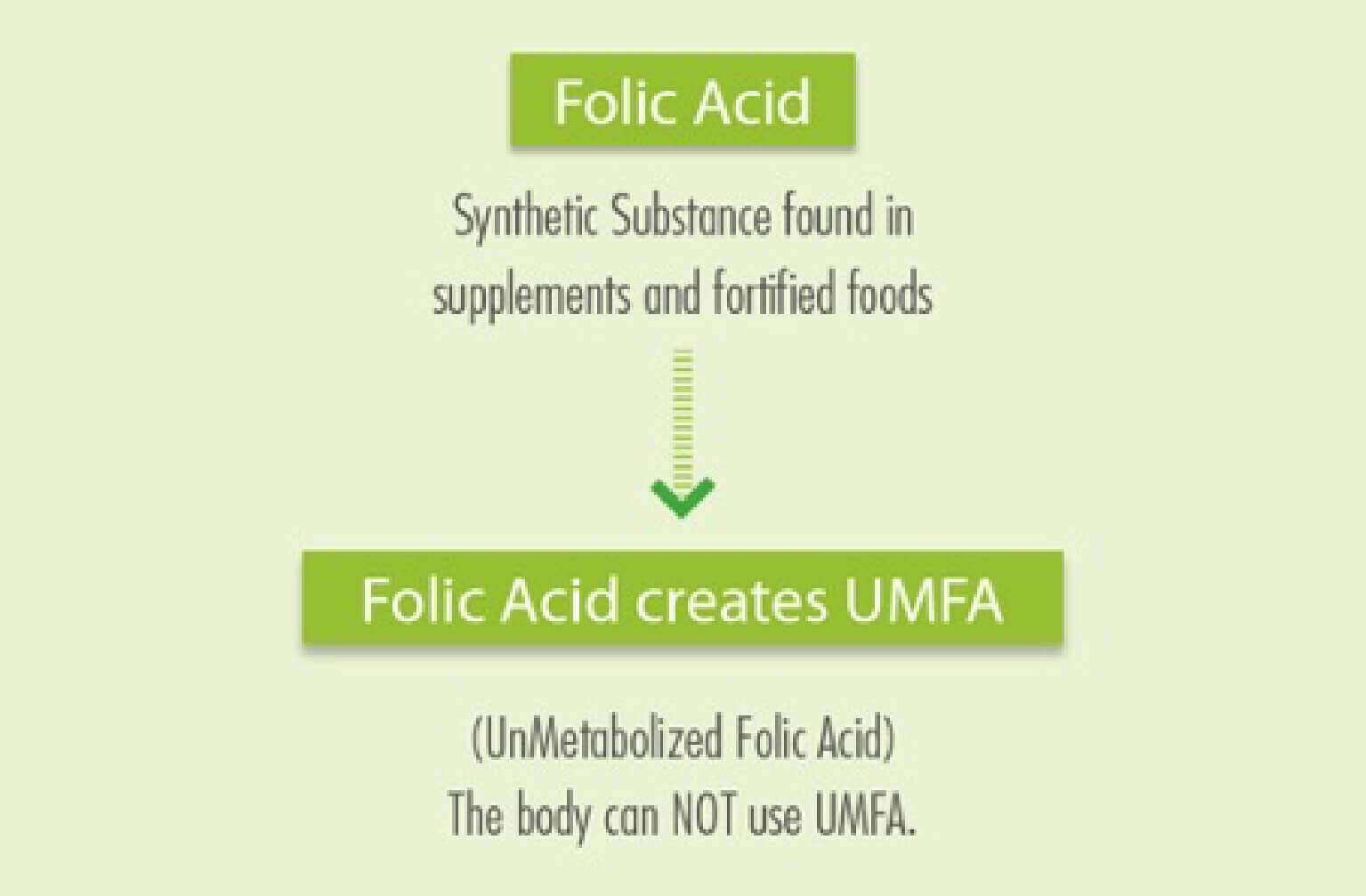In the recent years increasing evidence of the advantages of reduced folate vs folic acid have been found. The rational use of reduced folate (particularly reduced and methylated such as Quatrefolic®) is derived from the inability of a part of world population to assimilate and metabolize folic acid from food or supplements (the most of folate assumption is coming from folic acid man-made version in supplements and added to foods).
Folic acid and also food folate are not biologically active and need to be converted to the metabolically active 5-methyltetrahydrofolate (5-MTHF) through a multi steps process where the enzyme methylenetetrahydrofolate reductase (MTHFR) owns a key role. Some individuals, due to their unique genetic patterns and expression, have polymorphic forms of this enzyme and do not produce adequate or effective MTHFR [1, 2, 3].





